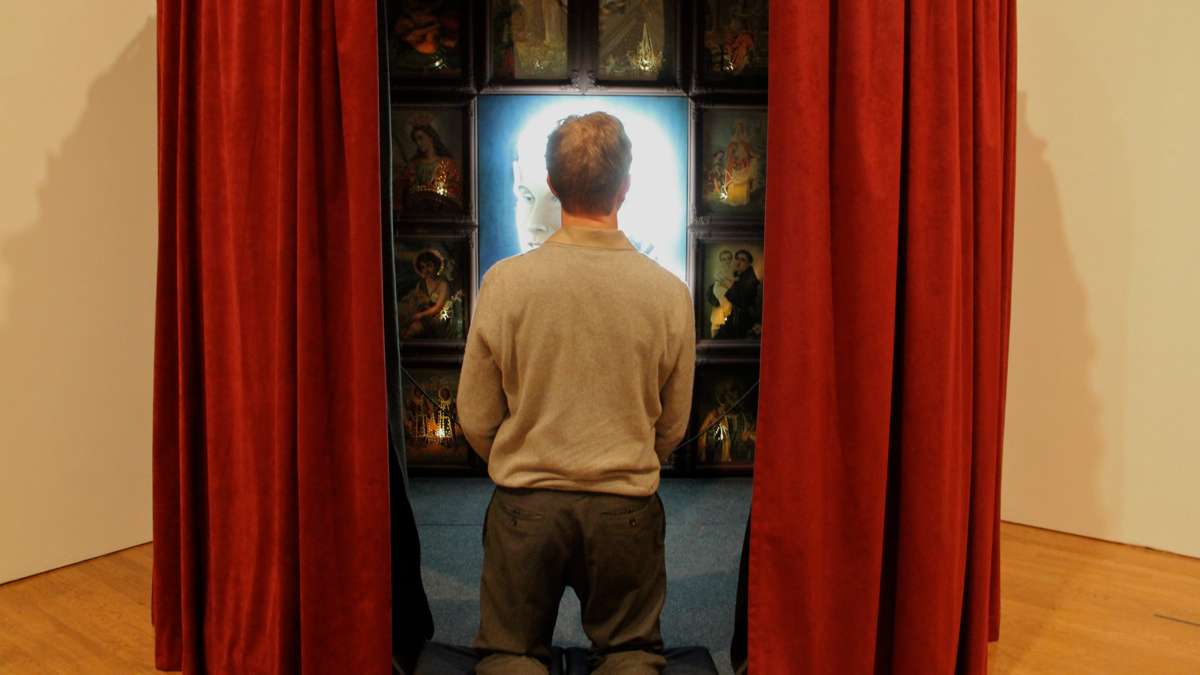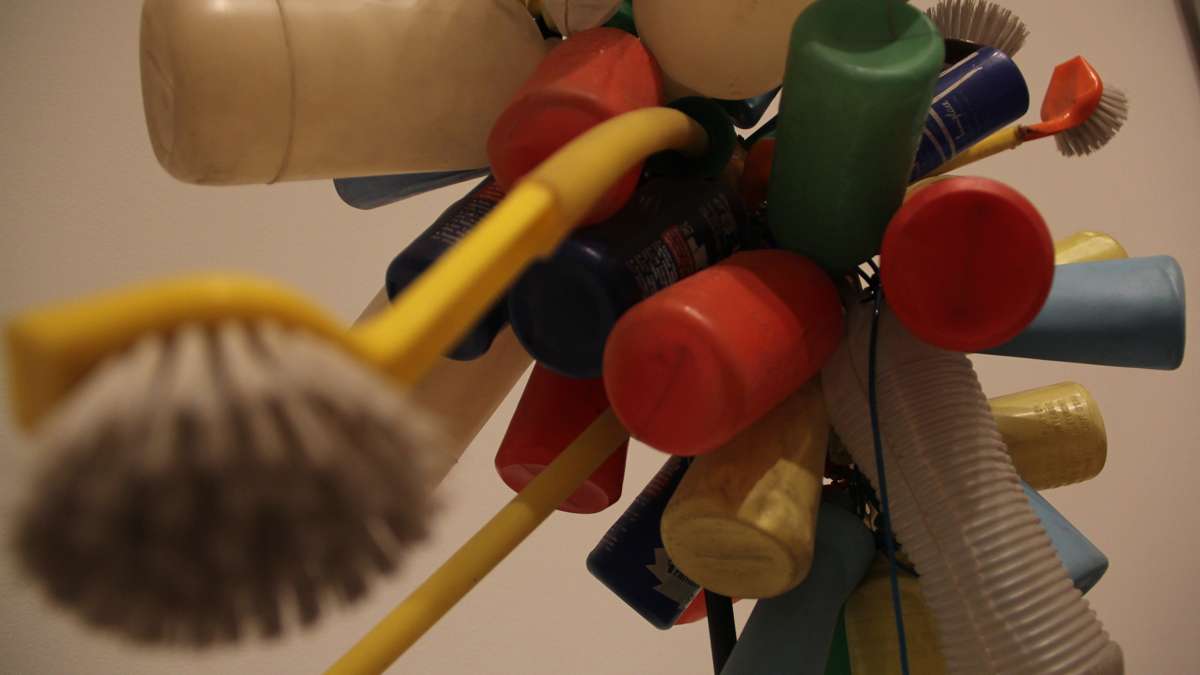Philadelphia Art Museum exhibit snaps, crackles and pops with energetic color [photos]
ListenAt the new exhibit on International Pop at the Philadelphia Museum of Art, visitors are invited to kneel at a shrine to Roberto Carlos, the massively popular Brazilian musician.
At the new exhibit on International Pop at the Philadelphia Museum of Art, visitors are invited to kneel at a shrine to Roberto Carlos, the massively popular Brazilian musician.
“Adoração: Altar de Roberto Carlos” (Adoration: Altar for Roberto Carlos) by Nelson Leirner is a curtained niche, housing a neon bust of Carlos surrounded by illuminated religious icons.
Inside the darkened shrine, Carlos is blinding. The series of weakly lit sacred icons is completely overwhelmed by the flashing pop singer. Pop art, it seems to say, will have an irreverent ego.
“International Pop,” opening at the Philadelphia Museum of Art on Wednesday, includes works by many of the touchstone artists of that midcentury art movement: Andy Warhol, Jasper Johns, Robert Rauschenberg. The main thrust are the dozens of lesser-known artists from around the world who added their light to the movement.
Pop art started in America and Great Britain as artists appropriated comics, advertising, and vibrant color to make work that flattened high art with conspicuous consumption. The first stab at a definition came from the English artist Richard Hamilton in 1957: “Pop art is popular, transient, expendable, low-cost, mass-produced, young, witty, sexy, gimmicky, glamorous, and Big Business.”
Hamilton’s own “Hers is a Lush Situation” (1958) is a prototype of the style, but does not resemble what many consider Pop. A largely abstract work taking cues from the body contours of a Chrysler. It has muted colors and the subtlest reference of celebrity montage: Sophia Loren’s disembodied lips float at the top of the canvas.
“Hamilton was prolific, and very cerebral,” said Erica Battle, an associate curator at the Philadelphia Museum of Art. “For him, the collage elements, lifting the title from an ad, using the car’s contours, this was the start of those themes.”
It was a movement of its time, but not everyone agreed on what it was.
“Pop did not always go by that name,” said Battle. “In the U.S., it was called New Realism. In Paris the Nouveau Realisme came together along similar ideals. Artists in Germany were Capitalist Realists, rejecting the name Pop — they did not want to seem to be importing American ideas.
“Artists in Brazil rejected American pop because America was complicit in the military dictatorship at the time,” said Battle. “So Pop had many local vernaculars.”
In some countries, Pop art was one of the only ways artists could comment on violence and censorship. While recovering from World War II or navigating military dictatorships, artists could still make cut-out collages from pictures in American magazines when they had few other resources.
Artist Julius Koller operated largely in the margins of the Czechoslovakian art scene, making subversive and defiant works in the face of the Communist state, gaining more recognition in the 1990s. On view is his thickly bound scrapbook of collages, “Univerzalne Formy Observacie (U.F.O.) (Universal Forms of Observation [U. F. O.]).
From Japan, the show features collages of imagery from American magazines by Tanaami Keiichi, who added a few Japanese images to the mix. Countryman Ushio Shinohara made canvas based on traditional Japanese imagery; his “Oiran” is a Pop version of a woodblock print courtesan. He also paid homage to America with a replica of a Robert Rauschenberg combine sculpture, “Coca-Cola Plan.”
“America is a rising superpower, but not always embraced,” said Battle. “There’s an element of critique, of celebration, rejection, contrast. American magazines are making their way to Argentina, Brazil, and Japan. The spread of culture is felt around the world from the nexus of America, but not always celebrated.”
In accordance with the original definition, the show includes plenty of work that is young, witty, and sexy, including manipulated Italian movie posters for Marilyn Monroe in “Some Like It Hot” (Mimmo Rotella’s “The Hot Marilyn”) and Wayne Thiebaud’s lushly painted canvas of brightly colored cake.
WHYY is your source for fact-based, in-depth journalism and information. As a nonprofit organization, we rely on financial support from readers like you. Please give today.



















